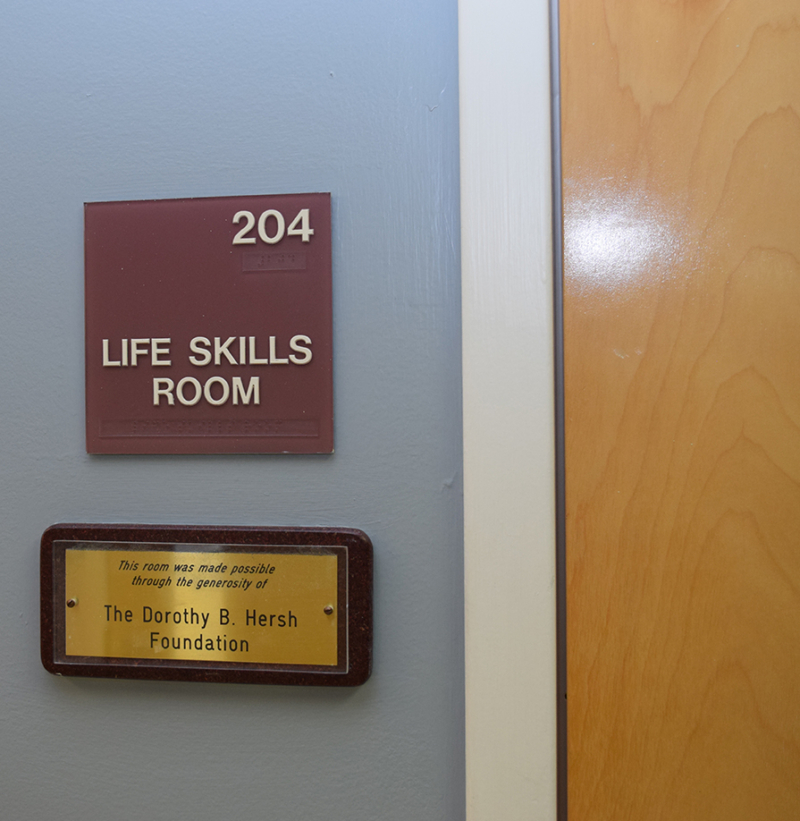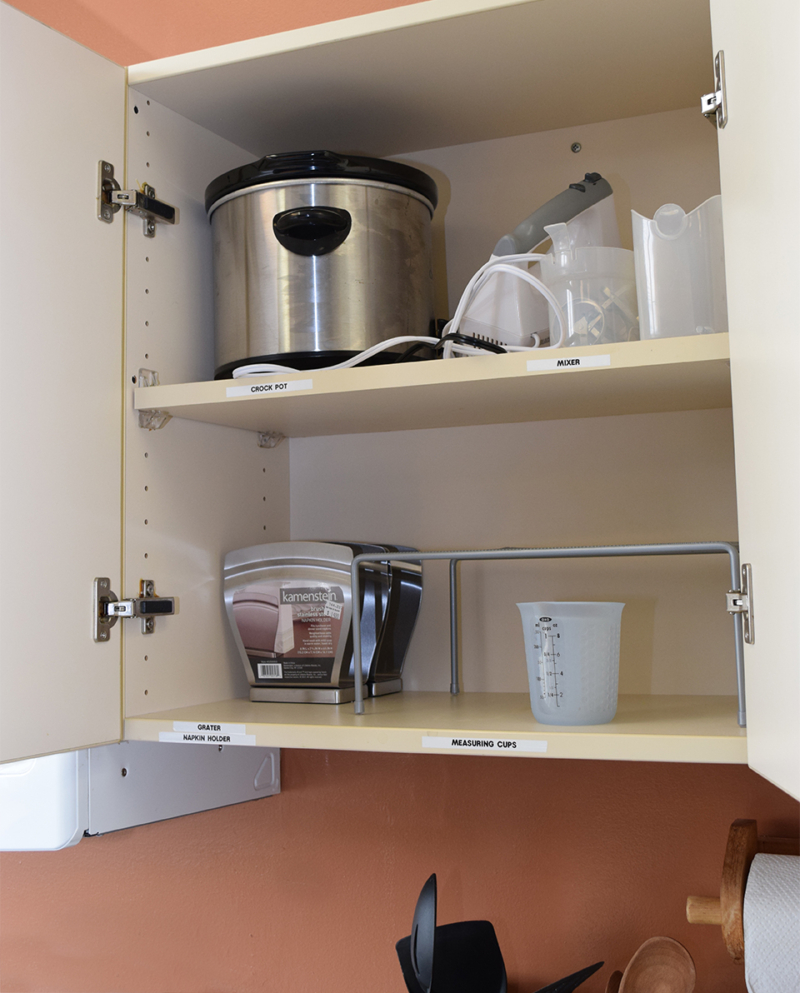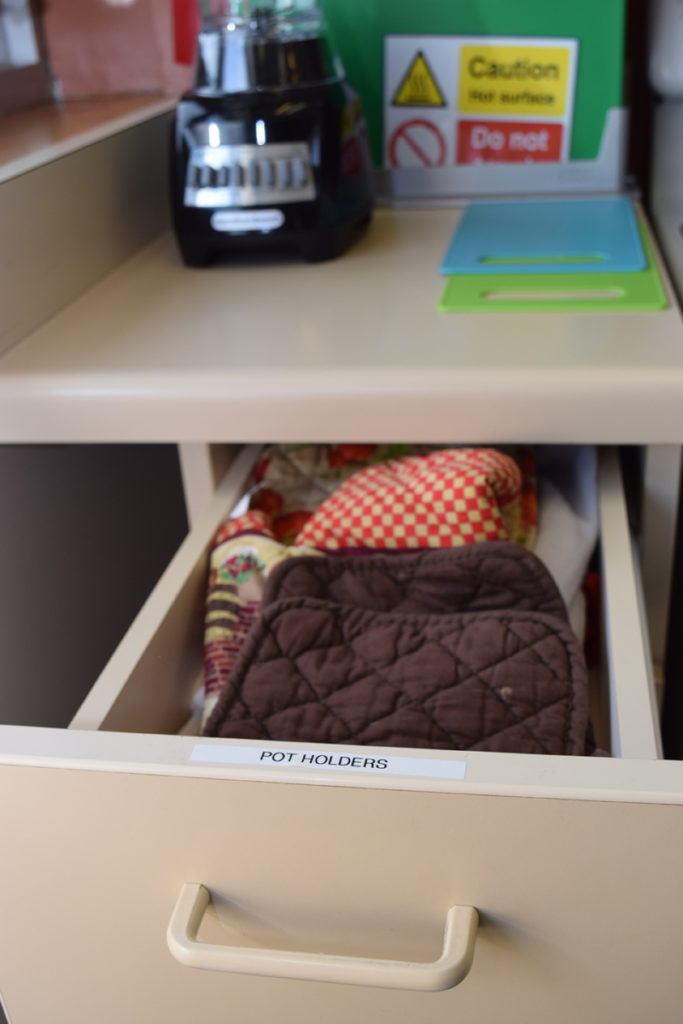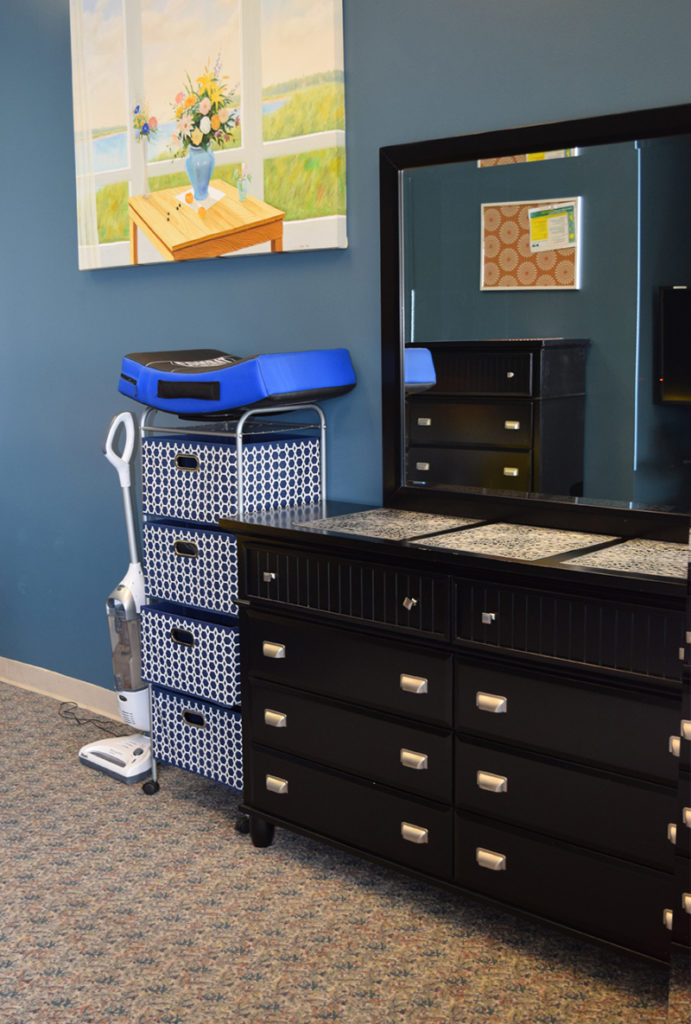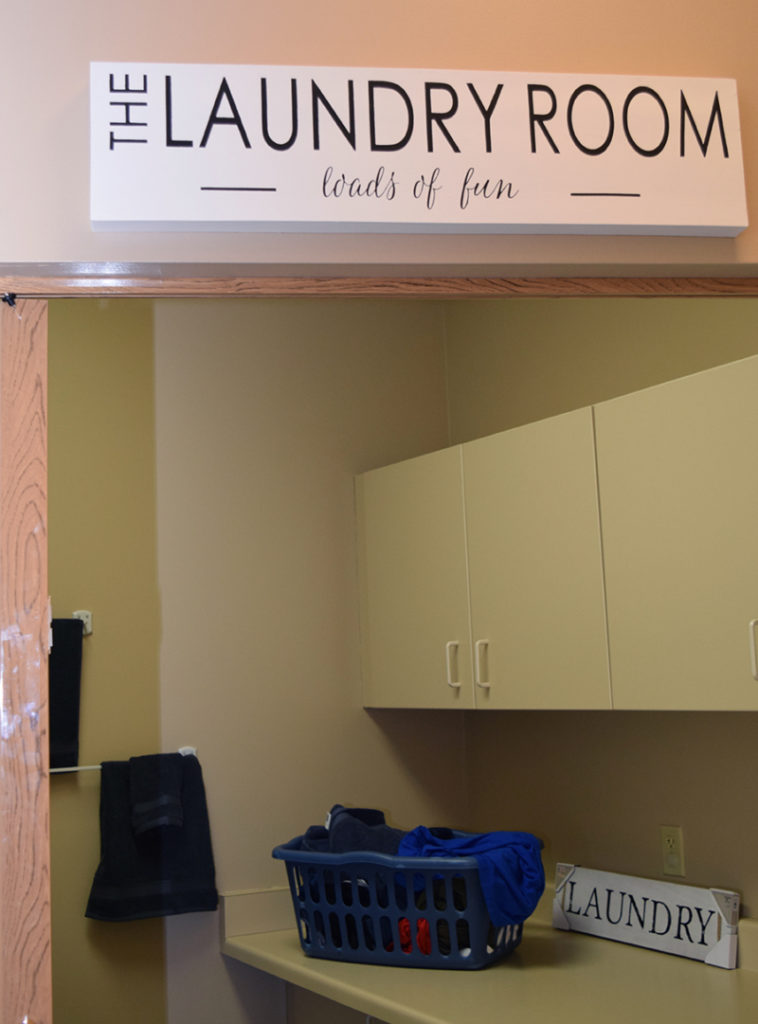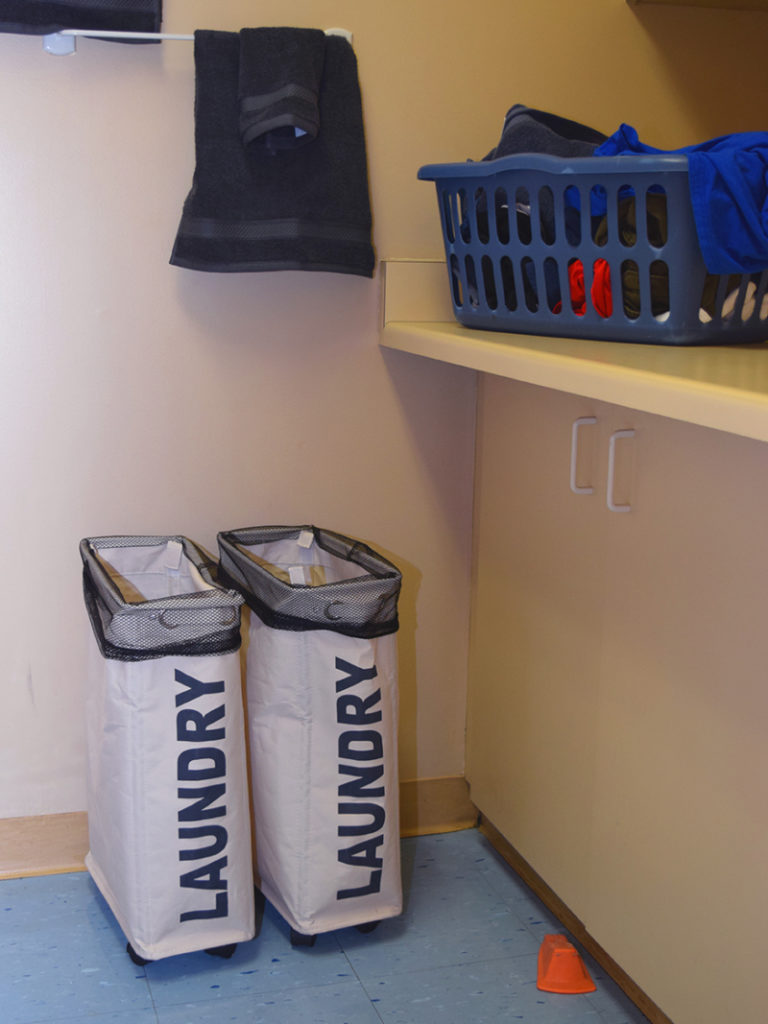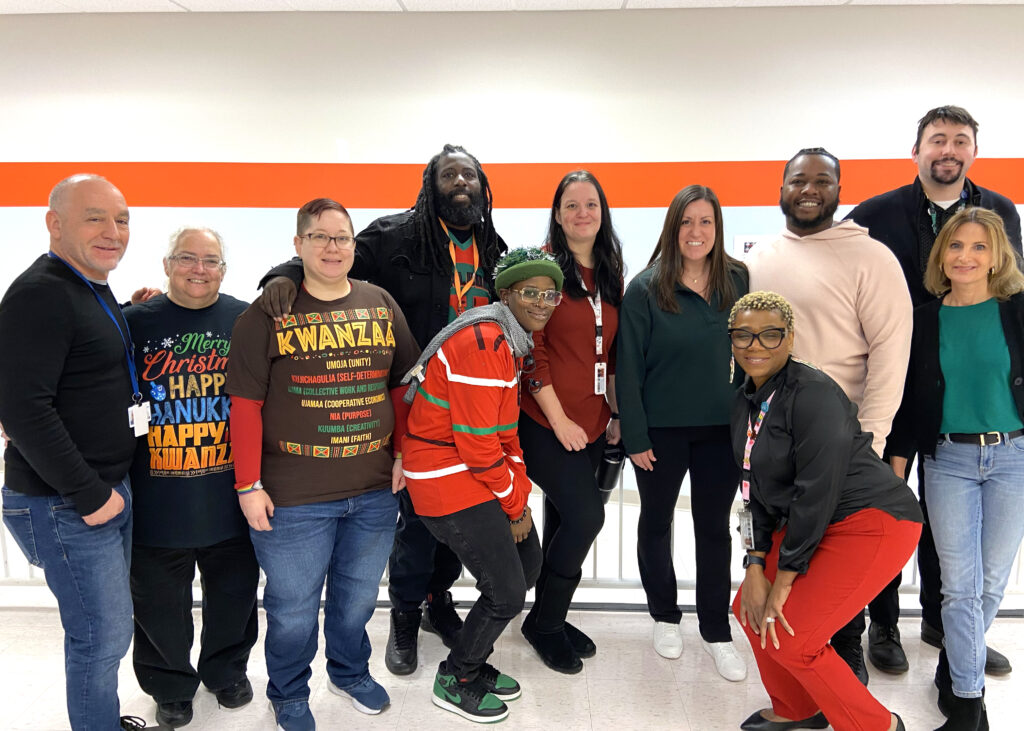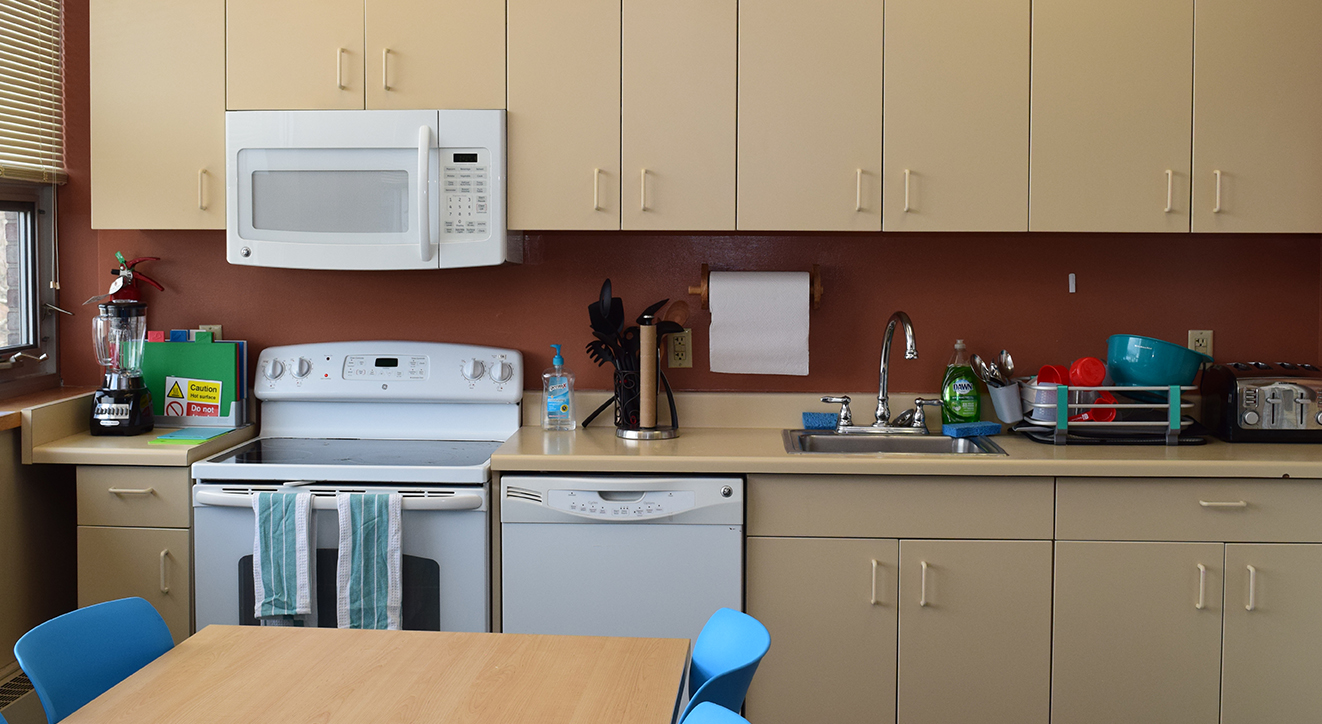
Learning to cook, clean, and accomplish other household tasks are key skills for living independently. At Academy360 Lower School, Life Skills training takes place in a facsimile apartment located on the second floor of the school, which features a working kitchen, living and sleeping areas, as well as a bathroom and laundry room.
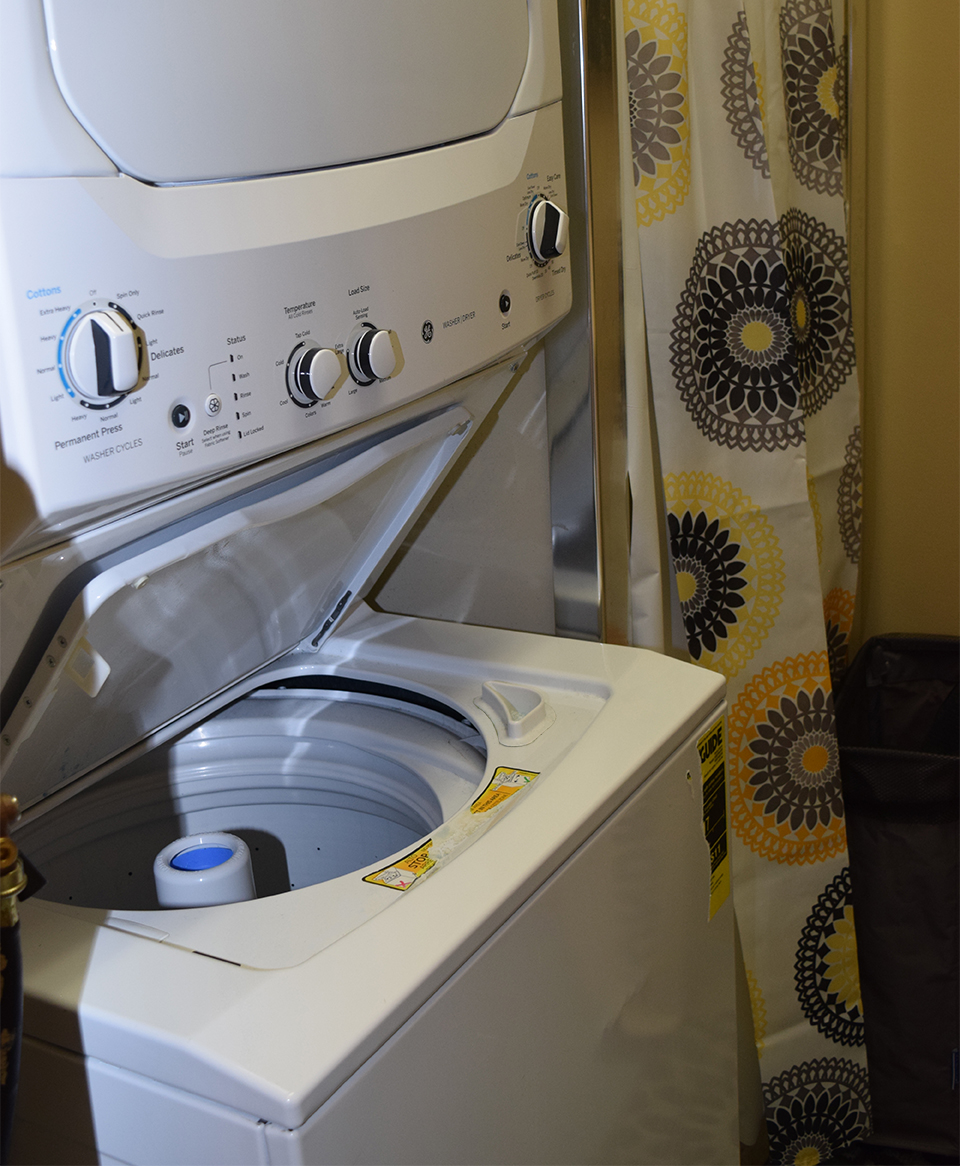 Life Skills classes begin when students reach the Middle School, with classroom teachers taking students through all the steps of daily life, from preparing meals to washing and putting away clothes. The apartment also serves as a natural environment for personal hygiene skills instruction and lessons taught by therapists at the school, as well as the location of A360 Lower School respites.
Life Skills classes begin when students reach the Middle School, with classroom teachers taking students through all the steps of daily life, from preparing meals to washing and putting away clothes. The apartment also serves as a natural environment for personal hygiene skills instruction and lessons taught by therapists at the school, as well as the location of A360 Lower School respites.
In this real-world space, students work toward mastering skills that are needed at home and perhaps someday in a place of their own.
Recently we sat down with teachers Caitlin Bonner and Krista Curley to learn more about A360’s Lower School’s Life Skills program.
* * * * *
When does Life Skills instruction begin?
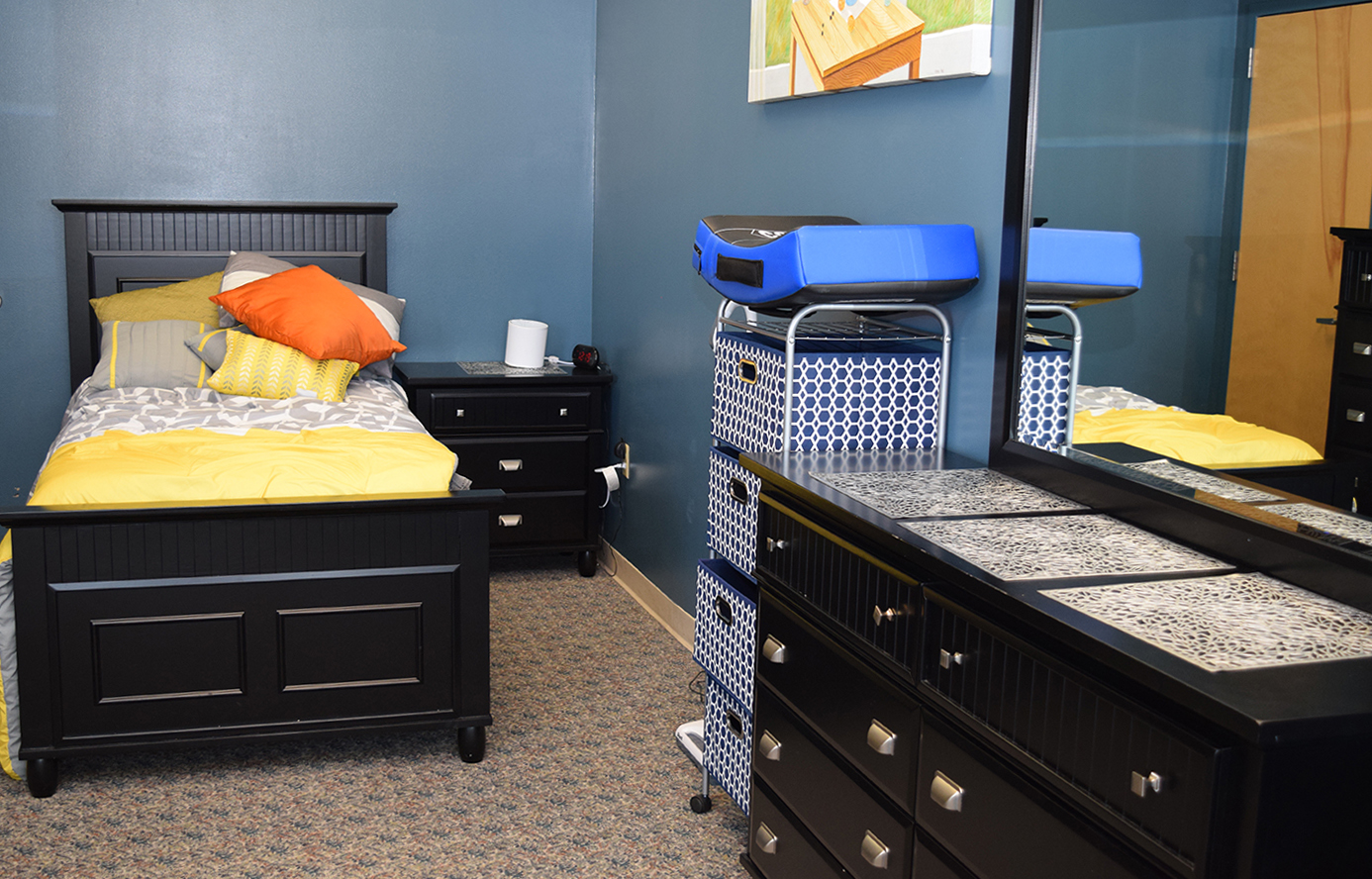 Pre-K/Elementary students do not have designated Life Skills class time, but teachers will bring students up to work on certain programs that are better suited to teach in the apartment than in the classroom. Actual Life Skills classes begin in the Middle School.
Pre-K/Elementary students do not have designated Life Skills class time, but teachers will bring students up to work on certain programs that are better suited to teach in the apartment than in the classroom. Actual Life Skills classes begin in the Middle School.
What type of programs would bring Pre-K/Elementary students to the apartment?
PreK/Elementary students come to the apartment to practice different types of tasks they’re working on with their teachers and therapists…maybe a dishwashing program, tooth-brushing or even how to identify different objects, such as kitchen tools or furniture. For students who can only identify items from pictures, visiting the apartment brings in some real-world generalization – the ability to recognize items in all their forms and not just in a picture. By working in both the classroom and the apartment, they not only learn to generalize the item itself but also locations in which it is found.
What is the curriculum for the Middle School Life Skills instruction?
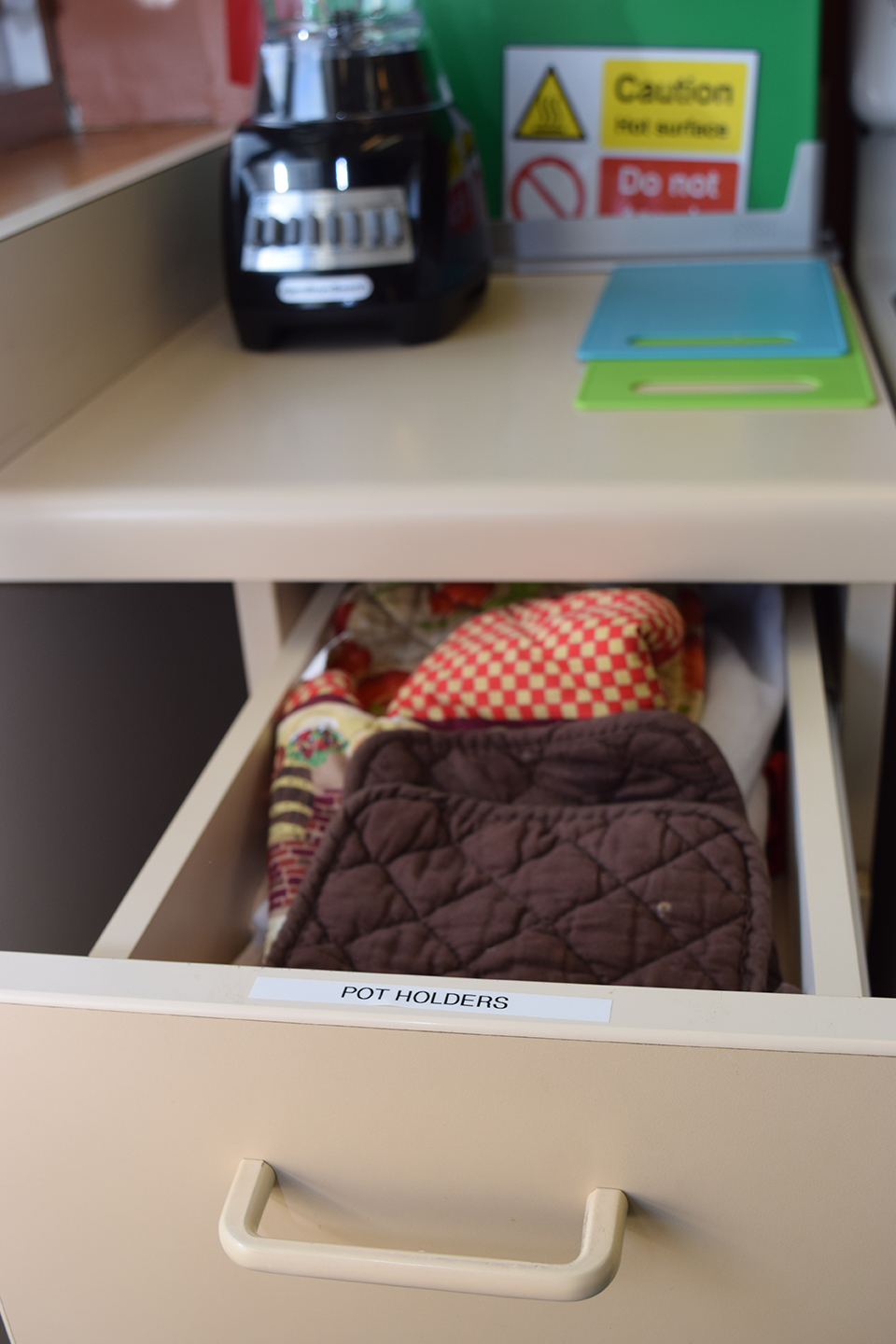 As teachers, we are given an outline of what is to be taught during the year and we’re able to tailor our classes to the abilities of our students. We begin with cooking skills, and then we add in cleaning and other tasks.
As teachers, we are given an outline of what is to be taught during the year and we’re able to tailor our classes to the abilities of our students. We begin with cooking skills, and then we add in cleaning and other tasks.
For cooking, we practice identifying kitchen objects, equipment, and food items. Using visual depictions of recipes, students can guide themselves in cooking dishes, which they serve and taste if they wish to.
Some students have had individual cleaning programs, so they’re already skilled at certain tasks, but as a group, they practice vacuuming, wiping counters, and other cleaning tasks. As the year goes on, we return to these tasks over and over as a refresher for skills they may have already mastered.
Each trimester we focus on different tasks, but we can adjust as we go along depending on what a group of students needs in particular.
What other skills do students practice in the apartment?
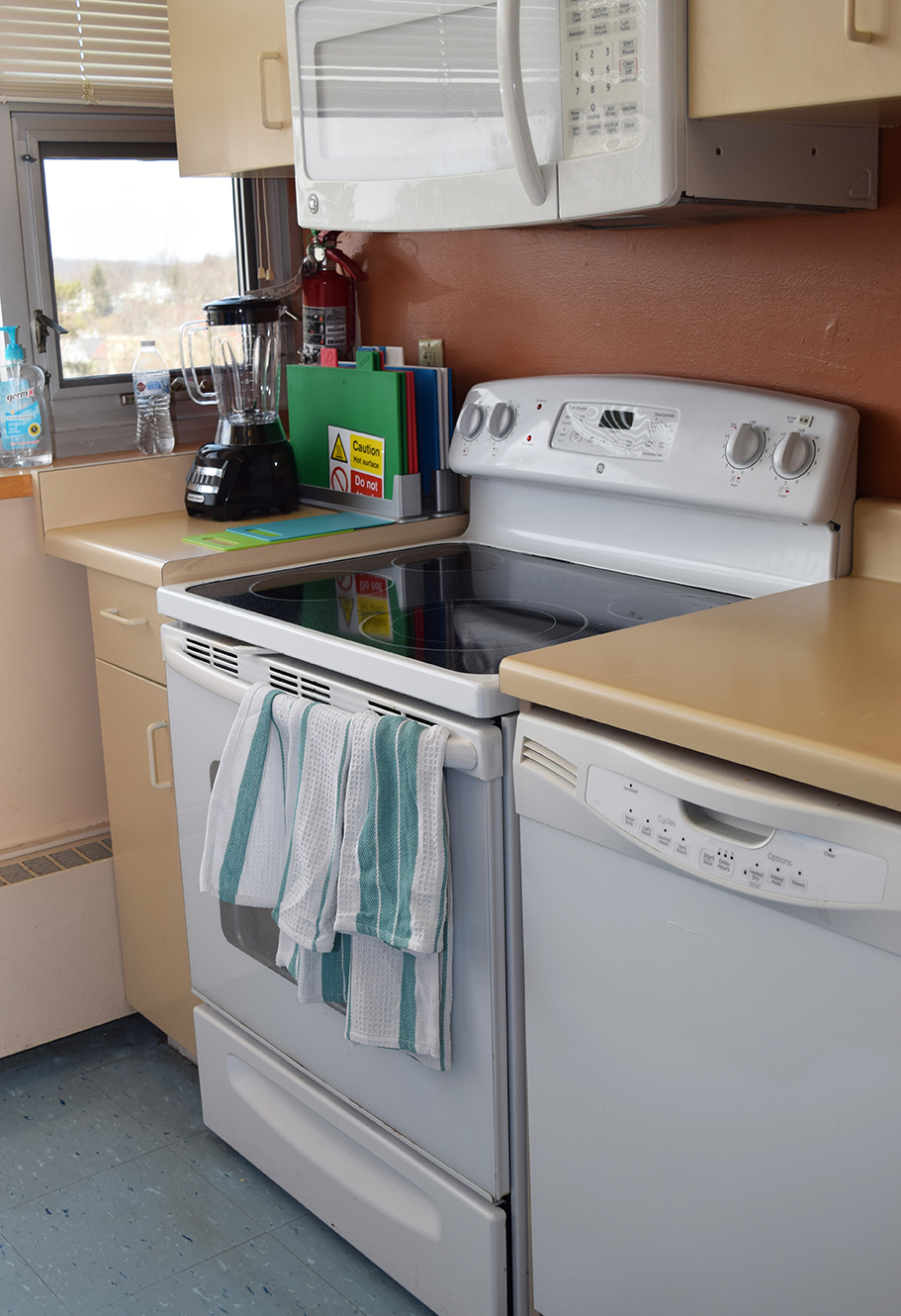 The apartment is set up like an actual home, so in addition to the kitchen area. we have a bed and dresser, and a clothes washer and dryer. Students practice bed-making and putting away clothes in the drawer or hanging them in the closet. Some students have laundry programs, so they are sorting clothes, using the machines, and folding the clothes to be put away.
The apartment is set up like an actual home, so in addition to the kitchen area. we have a bed and dresser, and a clothes washer and dryer. Students practice bed-making and putting away clothes in the drawer or hanging them in the closet. Some students have laundry programs, so they are sorting clothes, using the machines, and folding the clothes to be put away.
How do you decide which tasks to focus on with individual students?
It depends on the child, but we’ve found parents are really interested in being collaborative when it comes to the Life Skills curriculum.
Determining what tasks a child will focus on can come from talking to the parents, or it might be continuing something the student was working on in previous years, or it can be a task happening in the classroom that a parent doesn’t necessarily see at home, like cleaning up after themselves during lunch. If a parent always does that for their child at home, they might not see the need for it. But if the teacher sees the need and communicates to the parent “Hey, I think we should be working on this right now,” most of the time the parents agree. So what we focus on really depends on those factors and on assessments.
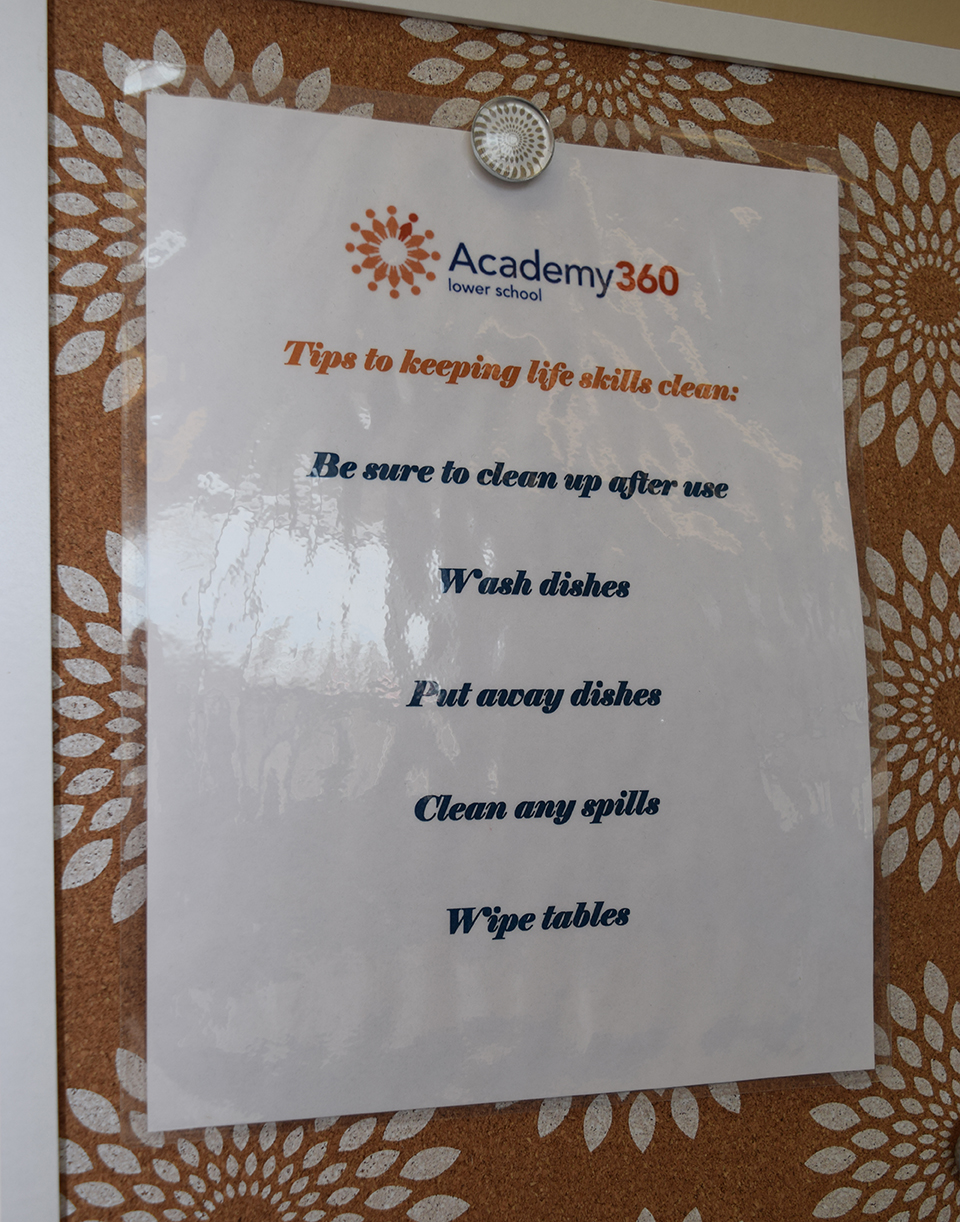 There are also skills that one set of parents might be very keen on their child learning but that other parents don’t care about. For example, a task such as toothbrushing seems rather cut-and-dried, but when it comes to steps like rinsing out your mouth, I’ve had parents who say “Yes, I definitely want them to learn that,” while others have said, “eh.” What’s important to one family isn’t always important to others. So we take that into consideration as well.
There are also skills that one set of parents might be very keen on their child learning but that other parents don’t care about. For example, a task such as toothbrushing seems rather cut-and-dried, but when it comes to steps like rinsing out your mouth, I’ve had parents who say “Yes, I definitely want them to learn that,” while others have said, “eh.” What’s important to one family isn’t always important to others. So we take that into consideration as well.
How do students feel about working in the apartment?
Typically they enjoy it, especially the cooking part! Maybe not the cleaning, making the bed, and all those household tasks – they enjoy it as much as we enjoy making our own beds! And, they are teenagers! However, all of these tasks are necessary life skills which help them to become more independent. But everyone loves the cooking and the eating, especially if it’s baking. We try to make the things they’ll have more fun with and that they’ll actually sample.
It’s a lot of collaboration but it works because the students are proud of what they can accomplish and parents are happy to see that their child can make something like a grilled cheese or simple cold cut sandwich for themselves. It might seem fairly straightforward, but we take them through the steps of gathering the ingredients, preparing the sandwich, not leaving food out on the counter, cleaning up after themselves – it’s a process. So, that can be really helpful for parents at home too.
Does any part of Life Skills instruction take place outside of the apartment?
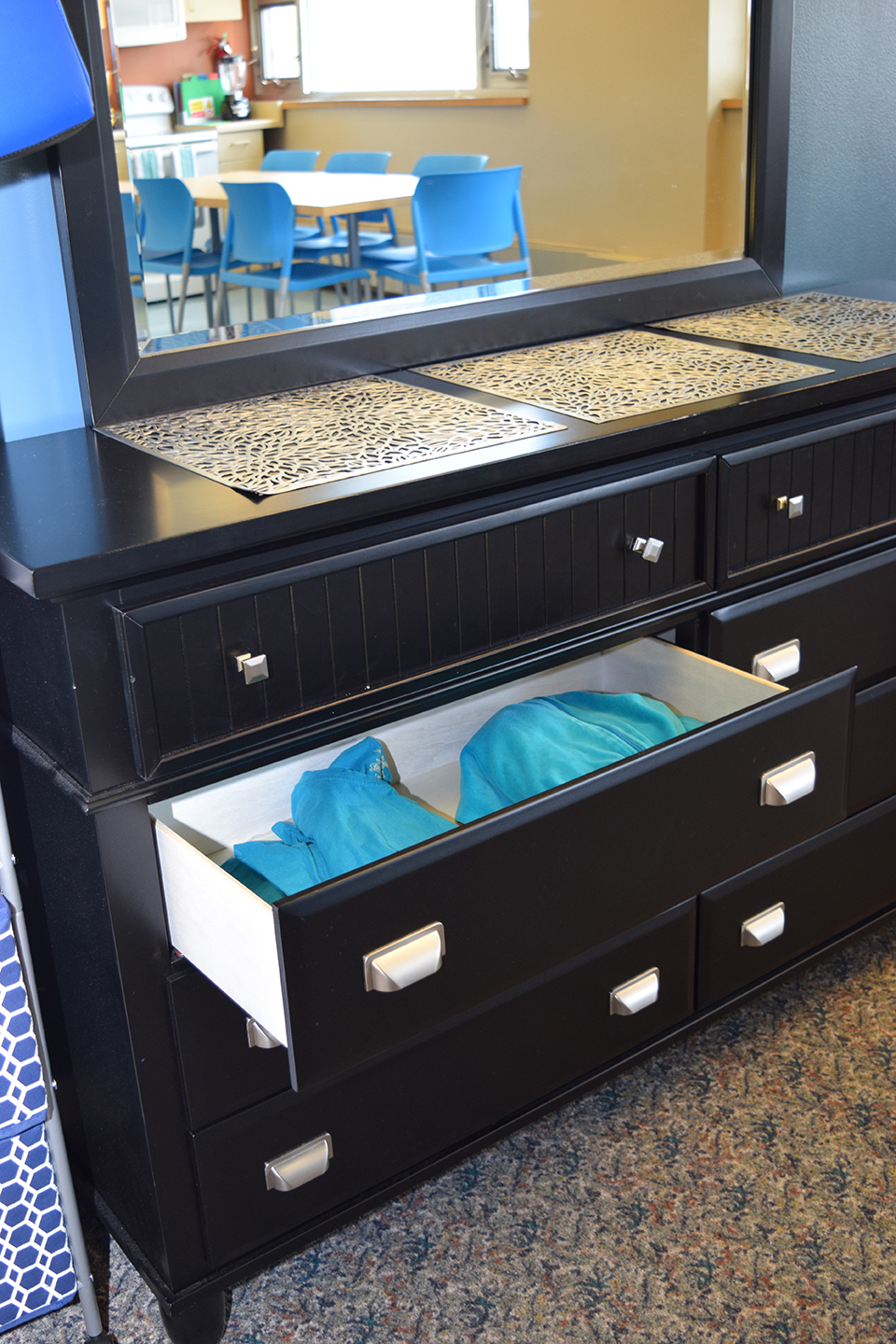 We have gone shopping for projects we’re working on. For the Halloween Dance in October, every classroom made a snack, so we went to the grocery store to purchase those ingredients. In December they had a “Secret Buddy,” and every week during the month we went to different stores so they could buy things for their buddy. The last week of the month they used all the materials to make their gifts.
We have gone shopping for projects we’re working on. For the Halloween Dance in October, every classroom made a snack, so we went to the grocery store to purchase those ingredients. In December they had a “Secret Buddy,” and every week during the month we went to different stores so they could buy things for their buddy. The last week of the month they used all the materials to make their gifts.
What is the most important tool for Life Skills instruction?
Definitely the apartment. It’s used for the purpose of teaching them independent life skills, so it’s set up realistically. That way it is more easily generalized into a real-life setting.
It’s also a setting for learning self-help skills, including personal hygiene and things of that nature. It helps with math skills – real-life applications through measuring, timers, thermostats. Following recipes and instructions and reading signs also strengthen comprehension. Our speech therapists find it useful for teaching prepositions – IN the cabinet, IN the refrigerator, ON the stove.
Teaching Life Skills is not just for learning household chores. In education, there is a lot of discussion about natural environment teaching. That’s what we use in Life Skills because you can’t learn everything at your desk. It’s not just pictures of a stove or a microwave; it’s an actual stove and an actual microwave. The Life Skills apartment is an invaluable tool in so many ways for preparing students at all skill levels for the next phases of their lives.
Note: Life Skills education continues at Academy360 Upper School where the lessons and skills taught become more complicated and build on the foundations the students learned in Middle School.
RELATED STORIES:
Practice Makes Perfect – CBI Teaches Skills For The Real World
Life Experiences For Students and Clients, Respite For Parents
Lisa Crouch is the Assistant to the Public Information Officer. Prior to working at Spectrum360, she worked at Yahoo, MSN, The Bergen Record, and other media outlets. She has a BA in English Literature from Columbia University. She is the proud aunt of an Academy360 Lower School student. In her off time, Lisa is a digital artist and writer.
is the Assistant to the Public Information Officer. Prior to working at Spectrum360, she worked at Yahoo, MSN, The Bergen Record, and other media outlets. She has a BA in English Literature from Columbia University. She is the proud aunt of an Academy360 Lower School student. In her off time, Lisa is a digital artist and writer.
